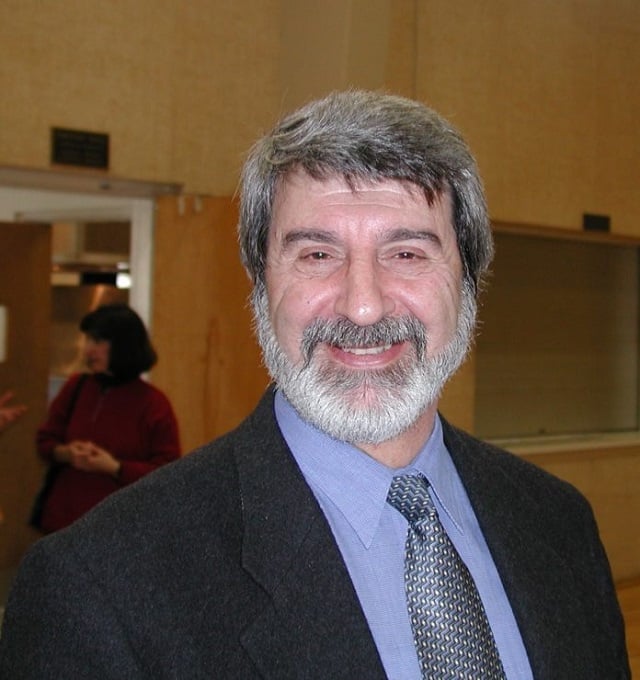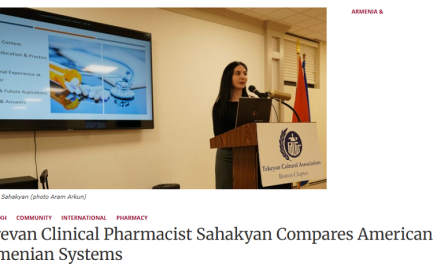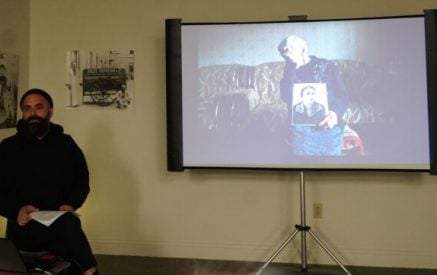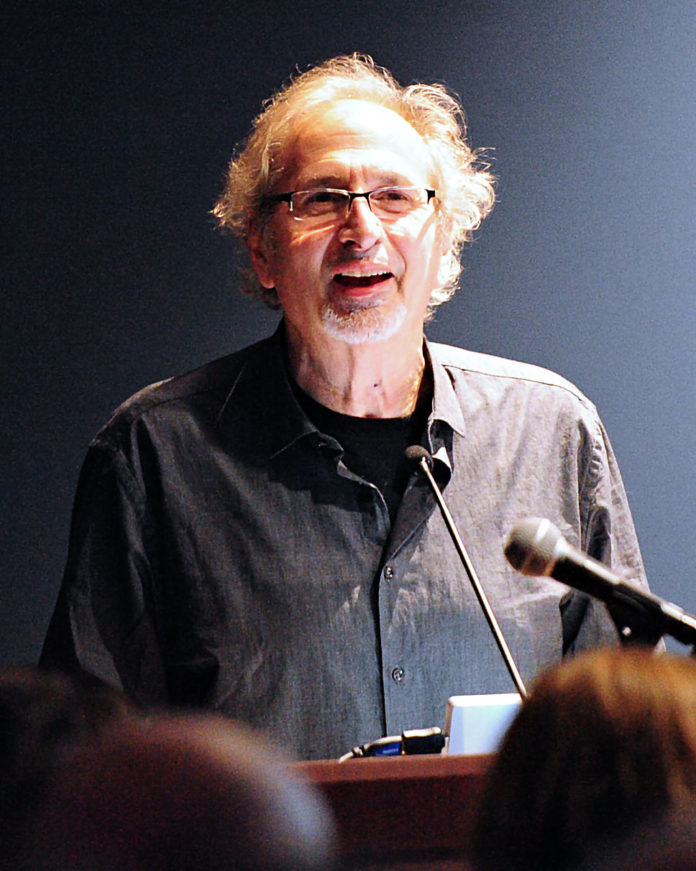In a 2011 interview in the Mirror, he discussed his childhood. Born in Beirut and raised in Aleppo and Damascus, he was greatly influenced by his father, an Armenian priest, to enter Armenian studies. His studies at Damascus State University, Yerevan State University and Oxford University provided him with formal training, and he received his doctorate from Oxford in 1979. While studying at Oxford he worked as the Armenian specialist at the British Museum. He began teaching at Harvard University as an instructor in 1974 and became a senior lecturer. He also worked as a bibliographer for the university library.
He left Harvard to become the first holder in September 1987 of the Marie Manoogian Chair, which Bardakjian said was established with him in mind. Ronald G. Suny was already the holder of the Alex Manoogian Chair in Modern Armenian History at the university and had started a program in Armenian studies. For seven years the two worked together in building up that program, organizing lectures, symposia, film festivals and musical events.
Read also
However, Suny left for the University of Chicago in 1994. Bardakjian said, “When he left, I took over as director of the program. On my request, the role of a director, to be appointed for three years by the director of the International Institute at the university, was defined and formalized, with various responsibilities and an executive committee to help.” Bardakjian organized many lectures and conferences through the Armenian Studies Program.
One major task was to fill Suny’s vacant chair at the university. Four scholars were invited as visitors to teach short courses (this journalist was one of them), and then there was a one-year appointment. After this Stephanie Platz was hired in 1997. She was followed by Jirair Libaridian, who in 2001 initially came to teach one semester a year for several years, and eventually was given a visiting professor appointment.
Meanwhile, Suny returned to the university and was an initiator of the Workshop on Turkish-Armenian Studies. He soon approached Bardakjian to participate, and the latter was encouraging. Bardakjian said, “My idea was to help impartial and openminded Turkish scholars and help Turkish denialism implode as a first step. In other words, without compromising on the Armenian Genocide, to bring in Turkish scholars.” However, he said that a disagreement in approach with the other organizers became evident, and specified: “My understanding was that their idea was of rapprochement.” He feared a watering down of the significance of the Armenian Genocide. Bardakjian participated in the inaugural workshop in Chicago in 2000, but soon left the group.
Bardakjian, who reads Ottoman Turkish among other languages, had previously also been drawn into genocide studies on several occasions. He was consulted on including the Armenian Genocide in the US Holocaust Museum, and this led him to write Hitler and the Armenian Genocide (1986), which documented the famous Hitler quote on the Armenians.
Teaching and Creating Necessary Resources
Bardakjian said that one of his most important focuses from day one at Ann Arbor was teaching, declaring: “What I did was teaching literature, culture and language. I taught both Eastern and Western Armenian. I also started taking on graduate students.” He also taught Classical Armenian, and had some history students.
Bardakjian instituted a major and a minor in Armenian Studies. While his chair initially was in the Department of Slavic Languages and Literatures, he moved it to the Department of Middle East Studies after a decade, where he felt it was a better fit due to geographic and historical reasons.
He taught some joint courses in this department, and collaborated with faculty, chairing dissertations, helping with recruiting and teaching, and promoted scholars in Ottoman and modern Turkish, Persian and Arabic. He said, “The idea was to integrate Armenian into that and to find its distinct place in that entire region and picture, as well as to collaborate with specialists in Early Christian Studies in the department.”
He quickly began the Armenian Language Summer Institute, providing annual two-month intensive summer classes in Yerevan from 1988 until 2010, with a few interruptions. He said, “This was, I think, a good enterprise. It really put us on the map. We got students from all over the world, from America, Europe, North Africa and Russia. It was conducted under the Soviets, and after the Armenian earthquake, so people were very anxious to go.” After Armenian independence, travel to Armenia became easier and competition emerged in the form of other programs, but it continued successfully, Bardakjian said.
Apart from this program, Bardakjian said he worked hard to try to establish academic ties with Armenia. An exchange program for faculty and students was signed between Ann Arbor and Yerevan State University, but, Bardakjian said, “It didn’t really fly. It didn’t fly because Michigan didn’t give the money. Yerevan said they would receive our students and we were supposed to receive their students, but it was expensive. We were talking about at least 60 to 70 thousand dollars a student, so it was confined to one or two visits.”
Meanwhile, in 2011, Bardakjian was elected to the Armenian National Academy of Sciences in in recognition of his contributions to Armenology.
In order to promote research on Armenian studies and provide easily accessible resources at Ann Arbor, Bardakjian worked on developing the university’s library collection on Armenian topics, just as he had while at Harvard University. He said, “We had some 1,500 titles when I first came, and it was up to 20,000 by the mid or late 1990s. I literally carried books from Yerevan. We also established exchanges with libraries, such as the Armenian National Library, library of the Academy of Sciences, and the Matenadaran [the Mesrop Mashtots Institute of Ancient Manuscripts]. I would go with big suitcases, with gifts, and come back with books.”
In the end, he said, Michigan ended up as one of the four largest Armenian collections in the US, with some books that no other library here has. Among the extensive personal libraries he obtained for Ann Arbor were those of Vahe-Vahian [Sarkis Abdalian], Kersam Aharonian and Kevork Abajian from Istanbul.
Bardakjian not only expanded the library resources for scholars and students but also created teaching tools. When he first came to Harvard in 1974, he said, “Robert [W. Thomson, Mashtots Professor of Armenian Studies] and I felt there was a need for textbooks. That is why, though I am not a linguist by training, together we prepared the Western Armenian textbook [A Textbook of Modern Western Armenian, 1977], which was a bestseller until the early 2000s.” Thomson then wrote a parallel volume for Classical Armenian, after which the two planned a reference guide for the entire period of Armenian literature.
However, both scholars ended up leaving Harvard, so they agreed to split the guidebook into two separate volumes. Bardakjian took on the modern period and published A Reference Guide to Modern Armenian Literature, 1500-1920 in 2000. He explained, “Our idea was not to work just ourselves but to make the material available and accessible to other scholars, Armenian and non-Armenian.” Unfortunately, he said, he could not find money or support to continue and expand this work chronologically past 1920.
Bardakjian also published a textbook of Eastern Armenian in 1999 with Bert Vaux.
Preparing Graduate Students
Bardakjian served as a graduate adviser to a number of master’s program students, as well as to doctoral students. Among the latter, he served as the main advisor to Kari Neely, who worked on Armenian, Arabic and Circassian literature in the first half of the 20th century; Michael Pifer (Armenian lyric poetry), who won the ProQuest Distinguished Dissertation Award; Vahe Sahakyan, on the post-Genocide Armenian diaspora; and Etienne Charrière, on Armenian and Greek novels in the late 19th century. He was joint advisor for Allison Vacca (on Armenian relations with Islam during the caliphate). He was on the doctoral committees for Stephen Rapp, Jr. (on Persia, Byzantium, and the Architects of the Written Georgian Past), Pamela Young (Ottoman-Armenian education), Ali Bolcakan (on language reform in Armenian, Turkish and Greek), who was defending his thesis the first week of February 2021; and Jeremy Johnson (not completed).
Future Projects
Bardakjian has a number of long-term projects he plans to realize. First is the translation of the 17th century chronicle of Grigor Daranaghtsi (Kamakhetsi). He said, “This is a very important work that is a cross between a travelogue and diary. He tells about the relations between Armenians and non-Armenians in the Ottoman Empire. It is not about kings and patriarchs but about ordinary people. He travels from Crimea to Rodosto to Echmiadzin and finally to Jerusalem.” The text is about 700 pages long, and the style is convoluted, so Bardakjian is on his third revision and completing the footnotes. He hopes it will be ready this year.
After Daranaghtsi is finished, Bardakjian said he will focus on a handbook on Armenian literature to be published by Brill and sponsored by the Association Internationale des Etudes Arméniennes. It discusses the status of the field, with 10-15 scholars involved. Bardakjian is working on the 1640-1920 period.
Third is a history of the Armenian Patriarchate of Constantinople. He has been searching for evidence to explain its obscure origins.
He is also interested in the modern part of the Armenian apocalyptic tradition, post-Cilician period, and intends to put together a bibliography and a study of writings covering the 14th to 18th centuries. He had previously edited a volume with Sergio La Porta on this called The Armenian Apocalyptic Tradition: A Comparative Perspective (2014).
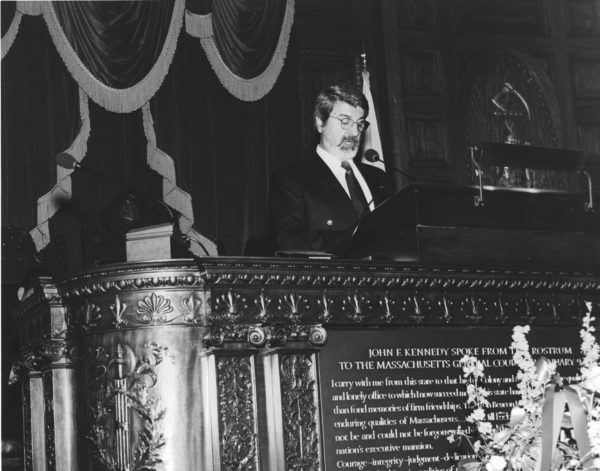
Kevork Bardakjian, keynote speaker at the Massachusetts State House Commemoration of the Armenian Genocide, April 2002
Focus and Approach
When asked, in light of his varied interests and fields, what his main academic focus might be, he replied, “It would be the history of Armenian thought, the relation between word and picture, and the period after the fall of Cilicia to the 18th century. That would be the most interesting to me.”
He gave an example of the relationship between word and picture. He suggested to someone from the Matenadaran who was looking for a topic to look for texts from the 17th and 18th centuries and paintings done by the Hovnatanians and others, to see how these two different mediums reflect Armenian realities of the time. He said, “I try to bring in paintings, music, texts, etc.; that is how I try to revive the silent past.”
He continued: “I am an organized eclectic. I am a universalist. I like to look at what is called Turkey today, the Armenians today, but I like to see them in the larger picture as neighbors to Syria, Iran and Russia now. When I am studying something, I would like to bring in other disciplines and go to the roots of the phenomenon.”
Bardakjian is interested not only in Daranaghtsi but several other key texts of the same period. He said, “It is still some kind of mystery to me how the Armenians were able to survive the post-14th century to the 18th, and how some kind of informal structure, thoughts and actions, formed some kind of a unity – very loose, but something was there. That is what I will try to capture. That is what I will try to do by studying these texts.”
He explained further: “There are people who write on every single thing they discover. I don’t write on everything I discover. That is not my character. I want a fuller picture of things. So I also like to resolve obscure points and problems. I like them. But that serves a purpose. It’s not just that. It brings out something. I have written this booklet on Baronian’s writings [The Historical Figures and Events in Some of Hagop Baronian’s Allegorical Works, in Armenian, 1980], allegorical writings whose heroes are animals or Greek mythological figures, prepared under Ottoman censorship. Once you decipher it you have his political views, for instance. That is fascinating to me.”
Bardakjian characterized his scholarly approach: “I am in some ways a Marxist. In other words, I look at things in their appropriate milieu, in their place, and I don’t trust historians … so I go to texts. What is important to me is to see what people said at the time, fully realizing they may be propagandists of that era, but you have no choice. If you are going to reconstruct a period, you have to go to the texts. I don’t have much faith in generalizing theories.” He made clear that he is definitely not a post-Modernist, exclaiming, “I don’t believe in these things.”
On the Armenian Chairs in the US
Aside from his direct involvement at Harvard and University of Michigan, Bardakjian over the years has been consulted on the establishment of various other Armenology chairs in the US. He also has been involved in the Society for Armenian Studies (SAS) from its inception and has served as its president and in other high-level positions over the years.
When asked how successful the project of introducing Armenian studies in the US through university chairs has been, Bardakjian replied, “It was an excellent idea, but the fault was in the way they established these chairs and the terms they laid down. I know some of these institutions were arrogant: they told Armenians give us your money and then go. It was not the same in Michigan.” An endowed chair like that at Columbia University, he said by way of example, has not had a permanent chairholder for nearly three decades.
He added that ideally the agreement to fund a chair should specify the purpose of the chair (some field of Armenian studies), state that the endowment cannot be used for other purposes when the chair is vacant, but ensure that the money accumulates instead, and any candidates for chairholder must have excellent command of Armenian in order to be able to use Armenian-language primary sources. Beyond this, of course the university can choose any suitable scholar.
Bardakjian suggested that SAS should continue to keep an eye on the various Armenological chairs and programs which had been created through Armenian-donated money to make sure that they serve their intended functions. Although SAS would have no legal standing per se, it could still have some influence.
He also felt creating new Armenological institutes which could look after graduate students, encourage research and do publications would be useful.
Scholarship in Armenia
Bardakjian noted that in Armenia, Armenian studies has continued as it was in the past. The current government tried to introduce educational reforms. He said that however it is not the right approach, declaring, “For example, they have confused Armenian literature for global or comparative literature.” Instead, they should do both separately. What should be changed, he said, is the critical approach, principles and valuation of relevant authors.
As times change, some writers will be relegated to the rear and interest in others revived, but the emphasis, Bardakjian stated, should be on authors of contemporary relevance. He declared, “We need to teach the important writers who illuminate our minds about the past and present.” Furthermore, the critical tools the modern world uses must be introduced to Armenia, he said.
The Matenadaran has a new generation of young scholars, linguistically well prepared, which has joined the ranks of the established scholars there, Bardakjian said, while the Oriental Institute of the Academy of Sciences, led by Ruben Safrastyan, has a few young people, is publishing, and is open to change. Yerevan State University, on the other hand, Bardakjian declared, “has taken a very traditionalist and conservative stand. There is a more urgent and wider need for the use of contemporary methodological and critical tools.”
It general, it is the old guard, the old approaches and the old traditions that still prevail. Armenian arts and literature must, he said, see the world through Armenian perspectives, but such perspectives should be very wide.
Main Photo Caption: Prof. Kevork Bardakjian




















































